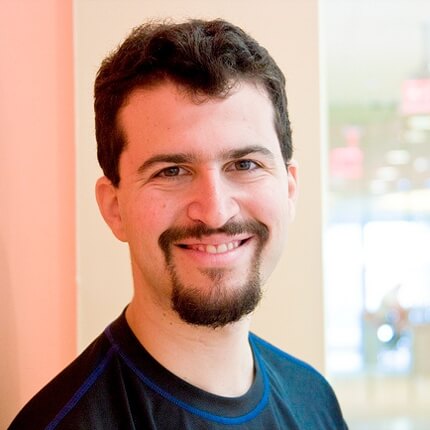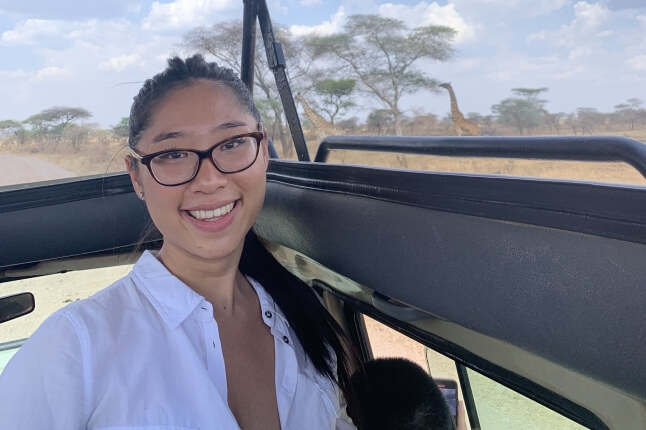News
Erez Lieberman Aiden, Ph.D. '10, was recognized for his work developing Hi-C, a method for sequencing human genomes in three dimensions.
Erez Lieberman Aiden, a fellow at the Harvard Society of Fellows, Visiting Faculty at Google, and Principal Investigator of the Harvard Laboratory-at-Large, based at the Harvard School of Engineering and Applied Sciences (SEAS), has been named the 2011 Grand Prize winner for the GE & Science Prize for Young Life Scientists.
The GE & Science Prize for Young Life Scientists exists to recognize and reward outstanding Ph.D. graduate students from around the world for their work in molecular biology. The annual competition, which includes a grand-prize award of $25,000, is supported by GE Healthcare and the journal Science.
Aiden was recognized for his work developing Hi-C, a method for sequencing human genomes in three dimensions. He and his team developed the new technology and used it to create the first spatial maps of the human genome.
One of biology’s fundamental mysteries is how the human genome, which is about 2 meters long, folds up to fit inside the nucleus of a cell, which is only a few millionths of a meter wide, without becoming so knotted as to be inaccessible to the cell.
Using their maps, Aiden and his team were able to observe two striking features about how the human genome folds. First, they found that active and inactive portions of the genome are spatially segregated inside the nucleus. Second, Aiden observed that at the megabase scale, the Hi-C data was consistent with a fractal globule, an extraordinarily dense, but totally unknotted, structure. (Physicists had proposed the existence of such a state decades ago, but Hi-C provided the first observational evidence of the existence of fractal globules in any polymer.)
An essay by Aiden describing the work, entitled "Zoom!", will be appearing in this week’s issue of the journal Science.
"I am really grateful to my main partner in this research, Nynke van Berkum, as well as my adviser, Eric Lander, without whom this project would have never gotten off the ground," said Aiden.
Aiden, Ph.D. '10, was enrolled at SEAS, where he completed his Ph.D. in Applied Mathematics. He also completed the Medical Engineering and Medical Physics (MEMP) Ph.D. program, which is part of the collaborative Harvard-MIT Division of Health Sciences and Technology (HST).
In 2009, Aiden was recognized by the editors of Technology Review magazine as one of the TR35, the top innovators under the age of 35. He was also awarded the 2009 Lemelson-MIT Student Prize for his inventions across a broad array of fields. In September, he was named an NIH Director’s New Innovator, receiving $2.5 million to fund his lab’s research.
Aiden’s win makes two in a row for SEAS. In 2010, the grand prize went to Mark Bates, Ph.D. '10, a graduate student in Xiaowei Zhuang's lab at Harvard University who earned his Ph.D. in Applied Physics from SEAS. Bates is currently a postdoctoral fellow at the Max Planck Institute for Biophysical Chemistry in Germany.
About the GE & Science Prize for Young Life Scientists The GE & Science Prize for Young Life Scientists was established in 1995 to recognize outstanding Ph.D.s from around the world and reward their research in the field of molecular biology. There are over 75 former prizewinners, many of them working in some of the world's most prestigious labs—among them the University of Tokyo, the University of Liege, Stanford, Harvard, the University of California, Walter Reed Army Institute, and many others.
Entrants write a 1000-word synopsis of their thesis and submit it to the journal Science for judging by an executive panel. Each year, one grand prizewinner is selected to win $25,000 in prize money. Prizes are also awarded each year to finalists in four geographic regions, each winner receiving $5,000. All winners receive a trip to Stockholm, Sweden, to accept their prize and meet with the current Nobel laureates.
For the purpose of this prize, molecular biology is defined as "that part of biology which attempts to interpret biological events in terms of the physico-chemical properties of molecules in a cell." (McGraw-Hill Dictionary of Scientific and Technical Terms, 4th Edition).
Topics: Applied Mathematics
Cutting-edge science delivered direct to your inbox.
Join the Harvard SEAS mailing list.



